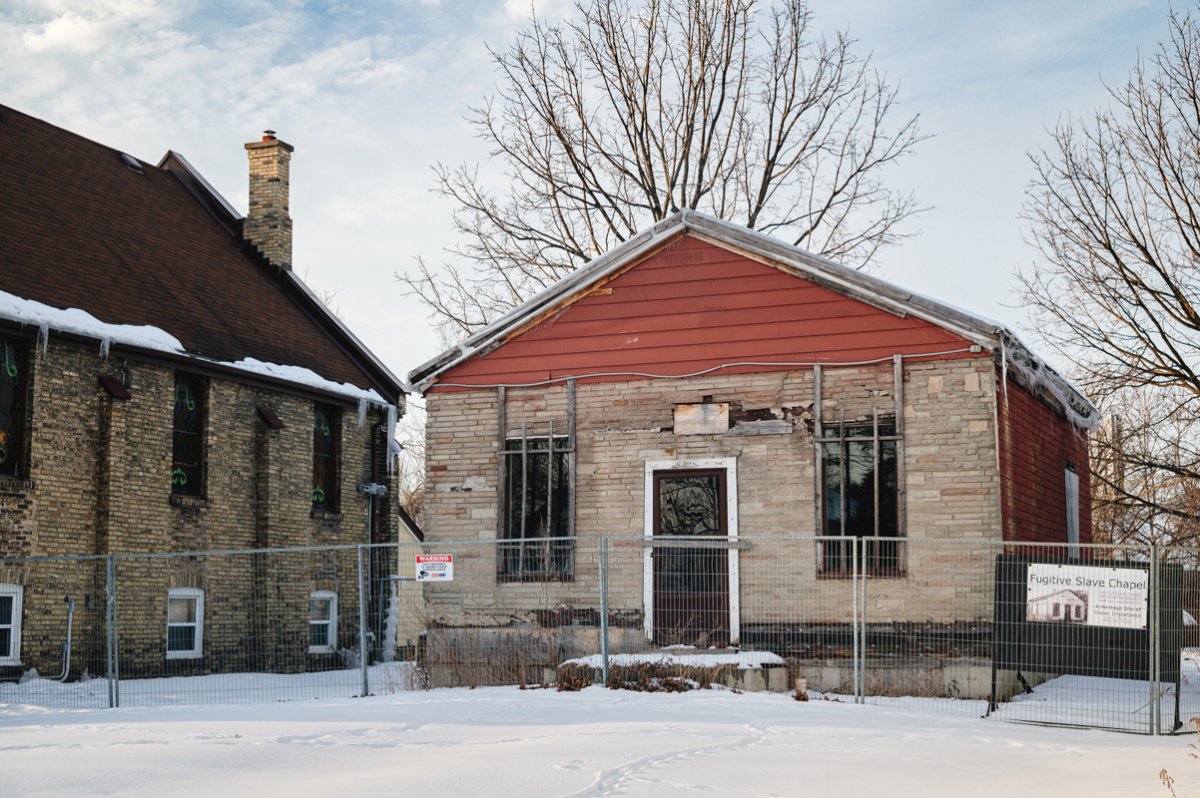A new documentary about the historic Fugitive Slave Chapel premiered Saturday, giving Londoners in attendance an opportunity to learn more about the history behind the church and its multiple relocations.

The documentary, titled The London Chapel Project, was produced and directed by Canadian actor and filmmaker Anthony Sherwood and screened for the first time at the London Public Library’s central location as part of ongoing Black History Month events.
Sherwood, who first learned about the historic church one year ago, said he was motivated to document its history almost as soon as he heard about it.
“It would have been a great tragedy for the city of London to lose this important history,” said Sherwood after the documentary’s premiere.
The 50-minute documentary interweaves its focus between the church’s origins as a sanctuary for African Americans fleeing slavery through the Underground Railroad in the 1850s and 1860s and the work done in the 21st century to preserve it as a historical landmark for the city of London and Black community in London.
Initially the African Methodist Episcopal Church, the chapel was erected at 275 Thames St. in the early 1850s. In 1856, the chapel became the British Methodist Episcopal Church and was replaced 13 years later by a new building on Grey Street.
When exploring the history of the nearly 175-year-old chapel, Sherwood utilizes re-enactments performed by himself as Rev. Lewis Chambers and London’s Alexandra Kane as a runaway slave.
- ‘Shock and disbelief’ after Manitoba school trustee’s Indigenous comments
- ‘Super lice’ are becoming more resistant to chemical shampoos. What to use instead
- Is home ownership only for the rich now? 80% say yes in new poll
- Invasive strep: ‘Don’t wait’ to seek care, N.S. woman warns on long road to recovery
Sherwood interviewed over a dozen people for the documentary to get an understanding of the chapel’s history. He added the members of the various organizations and committees that worked to save the chapel were incredibly passionate about the project, adding the passion helped him.
“Meeting these people, these committee members who were so passionate, I could tell just by talking to them they were great storytellers,” says Sherwood.
“That’s what you look for as a filmmaker, people who are able to tell a story with great passion on screen.”
The documentary makes heavy use of Londoners Hilary Neary and Genet Hodder for historical perspectives and modern-day storytelling. Both Neary and Hodder worked extensively to help save the chapel numerous times after doing heavy research on its history.
The former chapel remained on Thames Street, serving as a private residence for decades and then as a storage site by a now-defunct transportation company. Sherwood’s documentary picked up the modern narrative in 2013 when it was first slated for demolition.
Viewers are then taken through the journey of moving it next door to the Grey Street church that replaced it in 1869, then having to move it a second time to its current location to Fanshawe Pioneer Village (FPV) last November.
The move last November, which cost over $400,000, is hoped to be a final resting place for the chapel.
Dawn Miskelly, the executive director of FPV, says the restoration is ongoing, with the hope to have it open by early summer and incorporated fully in the village’s setting not long after.
Given the filmmaker learned about the chapel only one year ago, Sherwood says the production was “absolutely crazy.” Filming first commenced in May, with limited opportunities to film inside the historic chapel. Filming continued off and on through to November to capture the move of the chapel to FPV.
Carl Cadogan, chair of the London Black History Coordinating Committee, said after the premiere he was very pleased with the documentary.
“I thought he captured the essence of not only the structure but the work that has been done,” said Cadogan, adding that it means a lot to reach this point in the chapel’s history.
Sherwood said the documentary screened Saturday is a partial version, as there is some colour correction and sound mixing he wants to complete. Once the documentary reaches its final cut, Sherwood says he plans to screen it at film festivals in Canada and internationally.
— With files from Global’s Mathew Trevithick







Comments